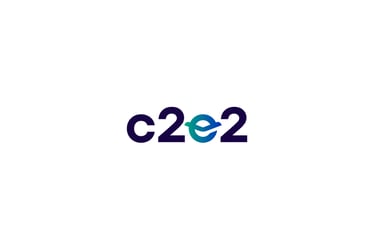Breaking the Cycle
Addressing the Root Causes of Educational Inequality for Black American Children


Breaking the Cycle: Addressing the Root Causes of Educational Inequality for Black American Children
Education is frequently regarded as an instrument capable of leveling the playing field and providing equal opportunity for all. However, educational inequality persists in the United States, particularly among Black American children. Poverty and institutional racism are major contributors to educational disparity, resulting in low outcomes and continuing the cycle of disadvantage. Educational disparity has far-reaching repercussions, affecting people, families, and even communities. Addressing educational disparity necessitates a diverse approach that includes increased school finance, poverty alleviation, and the promotion of educational excellence.
The Causes of Educational Inequality for Black American Children
Poverty
Poverty is a significant cause of educational inequality for Black American children. According to the National Center for Children in Poverty, nearly 40% of Black American children live in poverty, compared to just 15% of White children (National Center for Children in Poverty, 2021). Poverty can have a profound impact on a child's educational outcomes, as it often means that they lack access to basic resources like food, shelter, and healthcare. Additionally, poverty can create a cycle of disadvantage that is difficult to break, as children who grow up poor are more likely to have underprivileged educational outcomes themselves, perpetuating the cycle.
Systemic Racism
Systemic racism is another significant cause of educational inequality for Black American children. Racism has a long and storied history in the United States, and its effects continue to be felt today. Black American children often attend underfunded schools with fewer resources than their White counterparts, and are more likely to have inexperienced or unqualified teachers. Additionally, Black American children are often subjected to harsher discipline than White children for the same infractions, leading to higher rates of suspension and expulsion (Civil Rights Project, 2018).
Consequences of Educational Inequality for Black American Children
Educational inequality has a severe impact on Black American children, perpetuating the cycle of poverty, leading to a lack of economic opportunity, increased crime rates, and decreased social mobility. It can also create a sense of hopelessness and despair, leading to a lack of engagement in school and a belief that success is out of reach.
Solutions to Address Educational Inequality
Increasing Funding for Schools
One potential solution to address educational inequality is to increase funding for schools that serve predominantly Black American communities. This will ensure that these schools have the resources necessary to provide a quality education. Adequate funding can lead to smaller class sizes, access to technology, and extracurricular activities that help to enhance students' educational experiences (National Education Association, 2021).
Increasing Teacher Diversity and Providing Anti-Bias Training
Another potential solution is to increase teacher diversity and provide ongoing anti-bias training for educators. This can help to address the systemic racism that contributes to educational inequality. Teachers from diverse backgrounds can serve as role models for Black American children, while anti-bias training can help to create a more inclusive and welcoming school environment (Learning Policy Institute, 2021).
Addressing Poverty Directly
Implementing policies that address poverty directly is another potential solution. Increasing the minimum wage and providing a robust social safety net can help to alleviate the economic hardship that often leads to poor educational outcomes. Similarly, investing in affordable housing and healthcare can help to ensure that Black American children have access to the resources they need to succeed in school.
Promoting Black American Traditions that Value Education
Finally, eliminating educational disparity necessitates a promotion of excellence toward education and success. Instead of considering education as a commodity that is only beneficial if it leads to a high-paying profession, we must consider education's intrinsic value. This includes fostering in pupils a passion of studying and imparting critical thinking skills that will assist them in navigating the world around them. Access to quality education can also assist to break the cycle of poverty; educated people are more likely to earn higher wages and have more economic prospects. Furthermore, access to quality education can help to reduce crime rates and increase social mobility because educated people are less likely to engage in criminal activities and enjoy higher social mobility.
Investing in the education of Black American children is not only important from a moral perspective but also makes economic sense. A study conducted by McKinsey & Company found that eliminating the achievement gap between Black and White students could add $1.3 to $2.3 trillion to the US economy over the next decade. This shows that closing the educational gap is not only the right thing to do but also has tangible economic benefits.
Inequality in education is a major issue affecting Black American youth in the United States. It is the result of poverty and institutional racism, and it has serious implications. To overcome this challenge, we must improve school financing, combat poverty, and shift societal attitudes toward education. This will make all children's futures brighter, regardless of their background or circumstances.


